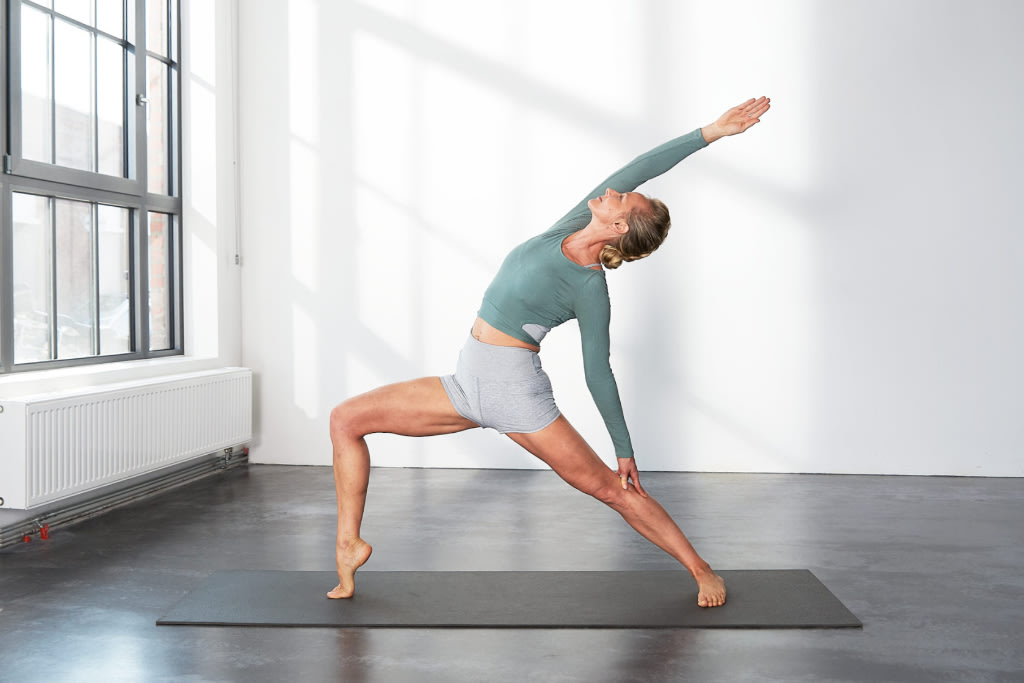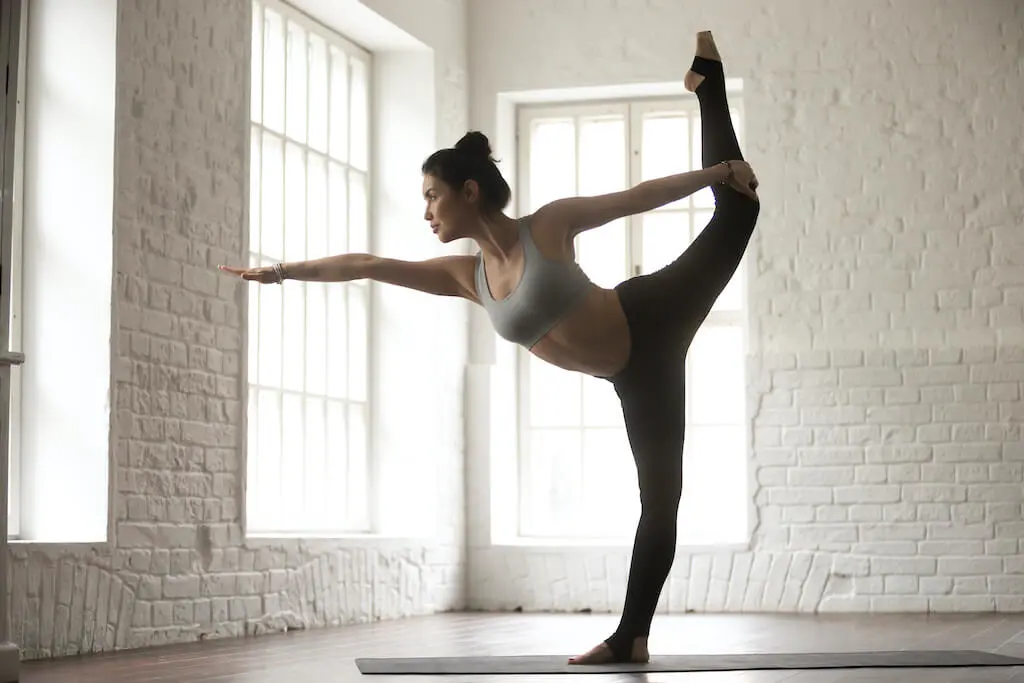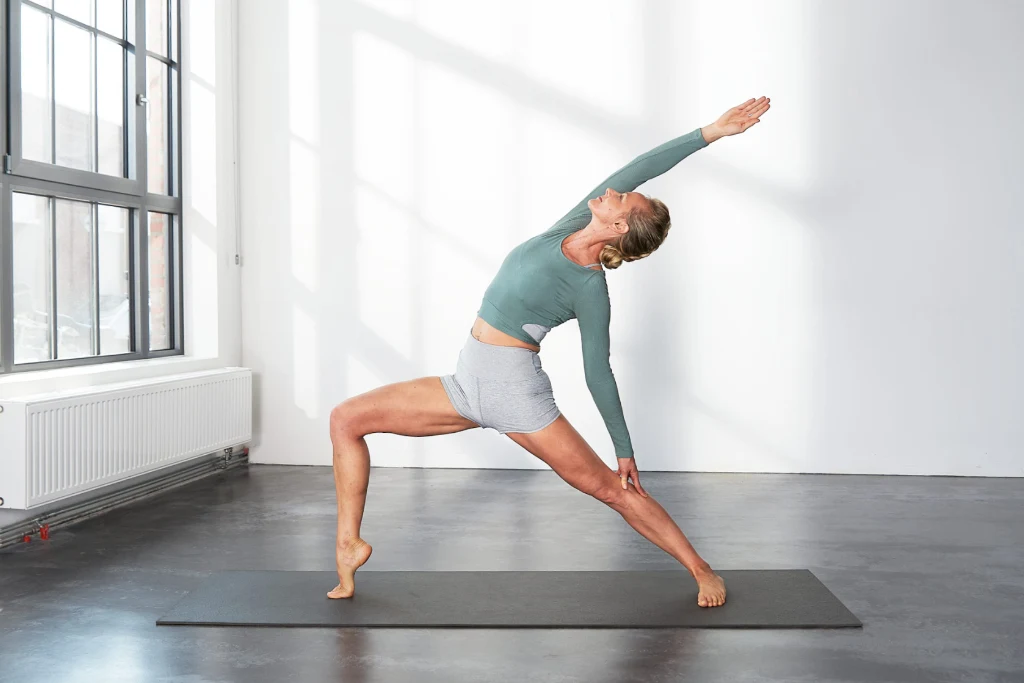Is Yoga Low-Intensity Cardio?

November 16, 2020

Low-intensity, steady-state cardio, or LISS, is included in all of the Sweat programs because it is a style of exercise that is beneficial for your overall health.
LISS is generally low-impact, suitable for all fitness levels, and helps to improve blood flow and circulation, which can help to promote muscle recovery.
Members of the Sweat forum regularly ask: “is yoga LISS?”. The answer can depend on a few different factors. Here’s what you need to know to decide whether you can substitute yoga for a low-intensity cardio session.
If you are following a Sweat program and you choose a yoga workout from the “Browse” tab in your Sweat app, it won't automatically record a trophy against your cardio goals for the week. This is because not all yoga can count as cardio.
Recording a cardio workout in the Sweat app
If you have done a cardio workout without using the cardio timer in the Sweat app, once you finish the workout, you can record a trophy towards your weekly “Cardio” goals by tapping “Low Intensity” to open the workout.
Above the workout timer, you should see “Already completed this workout?. Tap here” — use this function to record the workout as completed and receive a trophy on your app dashboard.
Now that you know how to record the workout, here's how to know if your yoga session can count as LISS.
When is yoga a form of low-intensity cardio?
Yoga can count as low-intensity cardio — as long as your heart rate remains steady at around 50-70 percent of your maximum heart rate for the duration of the workout.
The best way to achieve this is with continuous, rhythmic movement of large muscle groups — often the legs, back and arms.
More dynamic yoga styles, such as Ashtanga or Vinyasa yoga could be considered as LISS, as long as you keep moving through each flow and keep your heart rate elevated throughout.
When you use correct form and include strong poses designed to challenge your muscles, yoga can definitely be used to increase your overall fitness, strength and flexibility.
When deciding whether your yoga practice provides cardiovascular benefits, there are three factors to consider:

1. Intensity of the workout
To count yoga as one of your weekly LISS goals, if you are following a Sweat program, the intensity of the yoga workout needs to be consistently challenging you.
As a guide, the rate of perceived exertion throughout the workout should be around a three out of ten.
2. Time spent at higher-intensity
No matter what movement you choose for low-intensity cardio, you’ll need to spend at least 20 minutes at the desired intensity — at around 40-60 percent of your maximum heart rate — to reap the cardiovascular benefits.
3. Frequency of your workouts
While yoga may not raise your heart rate as high as activities like skipping or running, a yoga session of an hour or longer, done several times each week, can provide cardiovascular benefits.
Low-intensity exercise, when done regularly, can be an important part of your overall fitness regimen, particularly if you are unable to do higher-intensity workouts for a period of time.
Is yoga a good substitute for LISS?
Low-intensity exercise is often included in exercise recommendations because it helps with weight maintenance and cardiovascular health. There is emerging research that yoga may have similar benefits when practised regularly and combined with other healthy habits.
Yoga can have positive cardiovascular benefits
Studies have found that Hatha yoga can protect your body from cardiovascular disease and health conditions including high blood pressure, high blood sugar, excess body fat and abnormal cholesterol levels.
A 2014 systematic review and meta-analysis of randomised controlled trials by Harvard University in the US, published in the European Journal of Preventive Cardiology, found that yoga may lower the risk factors for metabolic syndrome (a group of health conditions that can raise the risk of heart disease, diabetes and stroke) and cardiovascular disease — these improvements have also been found to come from traditional forms of cardiovascular exercise, like walking or cycling.
While these results indicate that yoga can improve heart and lung health, more research is needed to draw conclusions about the benefits of yoga.
Yoga can help with maintaining weight
A 2013 literature review from the University of Arizona in the US, published in Alternative Therapies, found that yoga can be effective for promoting weight loss and improvements in body composition.

Yoga can help to reduce stress
You may have already experienced the benefits of using exercise to beat stress. A 2020 systematic literature review by Eötvös Loránd University in Hungary, published in Alternative Therapies In Health and Medicine, considered a range of different yoga styles to find that most types of yoga had positive effects on stress reduction in healthy people.
Yoga encourages you to become aware of your body through mindful attention to your breath as you move through various asanas (yoga poses). Combining mindfulness with this physical practice may help to lower cortisol levels in your body, which in turn can help to improve your sleep.
If you are looking for a workout that you can do in the evening before bed, yoga is one option that may help you to get a better night of sleep.

How can I use yoga for my cardio workouts?
If you want to do cardio at home, or you need to squeeze in your cardio session at the end of your day, yoga may be a good workout option.
To ensure that you are getting cardiovascular benefits from your practice, you can wear a heart rate monitor or fitness tracker that records heart rate during your workout session. As long as your heart rate stays around 50-70 percent of your maximum heart rate, you’ll be getting the benefits of training your heart muscle.
If you don’t have a heart rate tracking device, you can use your rate of perceived exertion to monitor the intensity of your workout. When you begin to feel yourself working, but you can still hold a conversation, you are at the right intensity — your effort should feel at about three out of ten.
Yoga workouts can help you to meet your cardio goals within the space of your mat.
Choosing yoga as your LISS is a great option when you need to do your workout inside, and don’t have access to a treadmill or much space available. Using low-impact exercise like yoga can ensure that you train your heart and lungs, with a quiet workout.
Whether yoga is your primary physical practice, or you want to include occasional workouts to complement your other training, there are several guided yoga programs you can follow in the Sweat app. To access, just make sure you have downloaded the latest version — and you can get started today!

A more empowered you starts with Sweat, and our editorial team is here to bring you the latest fitness tips, trainer recommendations, wellbeing news, nutritional advice, nourishing recipes and free workouts.
* Disclaimer: This blog post is not intended to replace the advice of a medical professional. The above information should not be used to diagnose, treat, or prevent any disease or medical condition. Please consult your doctor before making any changes to your diet, sleep methods, daily activity, or fitness routine. Sweat assumes no responsibility for any personal injury or damage sustained by any recommendations, opinions, or advice given in this article.
Fitness